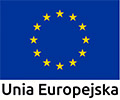Treblinka II - Commemoration
In 1955, the Central Board of Museums and Monuments of the Ministry of Culture and Art announced a competition to commemorate Treblinka as a memorial site. Three artists: Adam Haupt, Franciszek Duszeńko and Franciszek Strynkiewicz, creating a unique team, developed the memorial assumptions. They took into account the whole grounds. The borders of the former death camp were marked by huge two-metre high stones. The entrance gate was commemorated by two blocks of concrete. A paved road runs through the middle of the gate to the ramp. The concrete blocks leading to the ramp are symbolic tracks. Next to the ramp there are 11 stones with the names of countries from which Jews were brought to the camp. There is a paved road from the ramp to the monument that in the past led to the gas chambers. On both sides of the road are stones marking the undressing areas. On the hill, there is a high monument designed by Franciszek Duszeńko. It is built of large granite blocks, which resemble the Wailing Wall in Jerusalem. The front wall seems to be cracked in the middle. The top is topped with a cap with torn human remains and a symbol taken from Jewish tombstones: blessing hands on the front, i.e. on the west side. On the eastern side, there is a menorah, a symbol of Judaism. In front of the monument there is a granite block, as if taken out of it, with an inscription: “Never again” in Polish, Hebrew, Yiddish, Russian, English, French and German. The monument is a symbolic tomb for all those who died here. Behind the monument, in a rectangular hollow, there is a memorial of the crematorium. It is a recessed rectangle filled with black basalt, forming irregular clots and icicles. Around the hollow there are several liquid fuel lamps, which, when lit, remind us that a pile of human bodies was burning in this place. The author of this memorial is Adam Haupt. The area of 22,000 m2 was covered with concrete, on which 17,000 stones of various sizes were placed. The concrete covers the ashes of the people murdered here.
The stones symbolize matzevot – Jewish headstones. 216 of the stones bear the names of the cities and towns from which Jews were transported here. Initially, there were 130 of them. Another names were added in 1998 due to the financial support of the Council for the Protection of Memory of Struggle and Martyrdom in Warsaw. The added cities and towns come mainly from the former Białystok District, i.e. areas which after the Second World War were not within the borders of Poland.
Among the stones, there is a memorial of Janusz Korczak (Henryk Goldszmit) and children. This is the only named memorial. The whole memorial is maintained in grey. Concrete and granite remind of the ashes of 800,000 people resting here.
Since 1983, the grounds of former camps, the gravel pit, the so-called Black Road and the area around them created the Museum of Struggle and Martyrdom in Treblinka, which was a branch of the Regional Museum in Siedlce. From 1 July 2018, the museum started its activity as a new, separate cultural institution under the name of the Treblinka Museum. The Nazi German Extermination and Forced Labour Camp (1941-1944)





